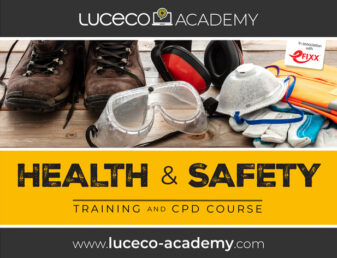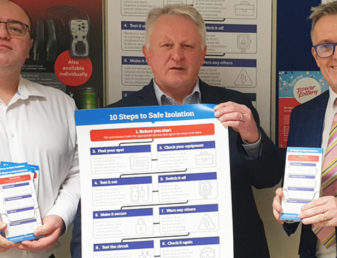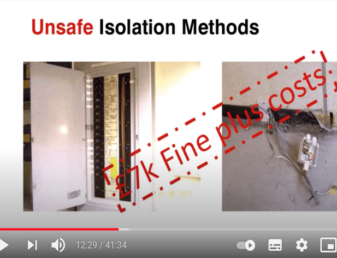This article will introduce risk assessments, explaining what they are and provide a brief overview of how you would carry one out.
What are risk assessments?
As part of managing the health and safety of a business, employers must control any risks and dangers in their workplace. At its simplest this means thinking about what might cause injury to people and deciding whether you are taking enough steps to prevent that harm. This is known as risk assessment and is a legal requirement under the Health and Safety at Work Act for both employers and self-employed people.
Why are risk assessments important?
The stereotype of risk assessments is that it’s all about paperwork for paperwork’s sake, and ‘health and safety gone mad’ but in simple terms it is a practical way to identify common-sense measures to control risks of injury in a workplace. The law doesn’t expect all risk to be eliminated, but people need to protected as far as ‘reasonably practicable’.
Employees have a duty to co-operate with and support their employers’ attempts to keep people safe in the workplace.
For the purposes of risk assessment a hazard is anything in a workplace that might cause harm. This could include chemicals, electricity, noise, ladders etc. Risk is the chance, whether high or low, of somebody being harmed by the hazard, and how serious the harm could be.
How do you assess risks in the workplace?
The Health and Safety Executive put together advice for five steps to effective risk assessment. To assess risks in the workplace, an employer can either work with a health and safety consultant or undertake the work themselves by systematically following these five steps, looking at every employee in the organisation and the work they do. Assessments should involve employees and their representatives in the process – they know their jobs best. Most risk assessment is fairly straightforward. Hazards can be as simple and general as an open drawer – which would be a risk to any organisation with desks – or complex and specific to the work processes undertaken in the premises concerned.
What are the five steps to risk assessment?
1) Identify the hazards
Walk around and look at what might cause harm. Ask employees for their suggestions. Visit the Health and Safety Executive website, any trade associations you belong to, and look at manufacturers’ instructions or data sheets for chemicals and equipment. All this information is easily collated and helpful in spelling out hazards and putting them into perspective. Check accident logs for advice on less obvious hazards, and remember to think about long-term hazards (eg noise or harmful substances).
2) Decide who might be harmed and how
For each identified hazard identify who might be harmed – this will help confirm the best way to manage the risk. Groups of people may not just be employees but also passers-by, cleaners, people who visit the workplace. Also, think about workers with specific requirements – new or young workers, disabled people, expectant mothers etc.
3) Evaluate risks and decide on precautions
Now you’ve spotted the hazards what can you do about them? The law says everything ‘reasonably practicable’ must be done to protect people from harm. Can the hazard be eliminated completely? If not, how can the hazard be controlled to limit the risk of harm? Try finding a less risky option (eg switch to a less hazardous chemical), prevent access or reduce access to the hazard (eg by blocking it off), issue personal protective equipment (eg goggles, safety helmet etc), provide welfare facilities (eg washing facilities or first aid).
4) Record and implement findings
If there are less than five employees in the business, results of risk assessments don’t need to be written down by law, but it’s still a useful thing to do. Writing down the results of your risk assessment proves a check was made, that the people at risk were identified, all significant hazards were dealt with, reasonable precautions were taken and staff were involved in the process. Prioritise and tackle the most important issues first.
5) Review and update risk assessments as necessary
Businesses and their needs change. New staff come in, new equipment, new procedures. All these can impact risks in the workplace, so it makes sense to annually review the risk assessment to see how things are improving and if any new risks can be identified.
What is a method statement?
A method statement is written guidance on how to carry out work safely – effectively this means how the risk assessment will be implemented. Method statements are most often found in the construction sector and are especially helpful for higher-risk, complex or unusual work, providing information to employees about how the work should be done and the precautions to be taken. The method statement also provides the principal contractor with information to develop the health and safety plan for the construction phase of a project.
For more information on risk assessment go to https://www.hse.gov.uk/risk/index.htm






